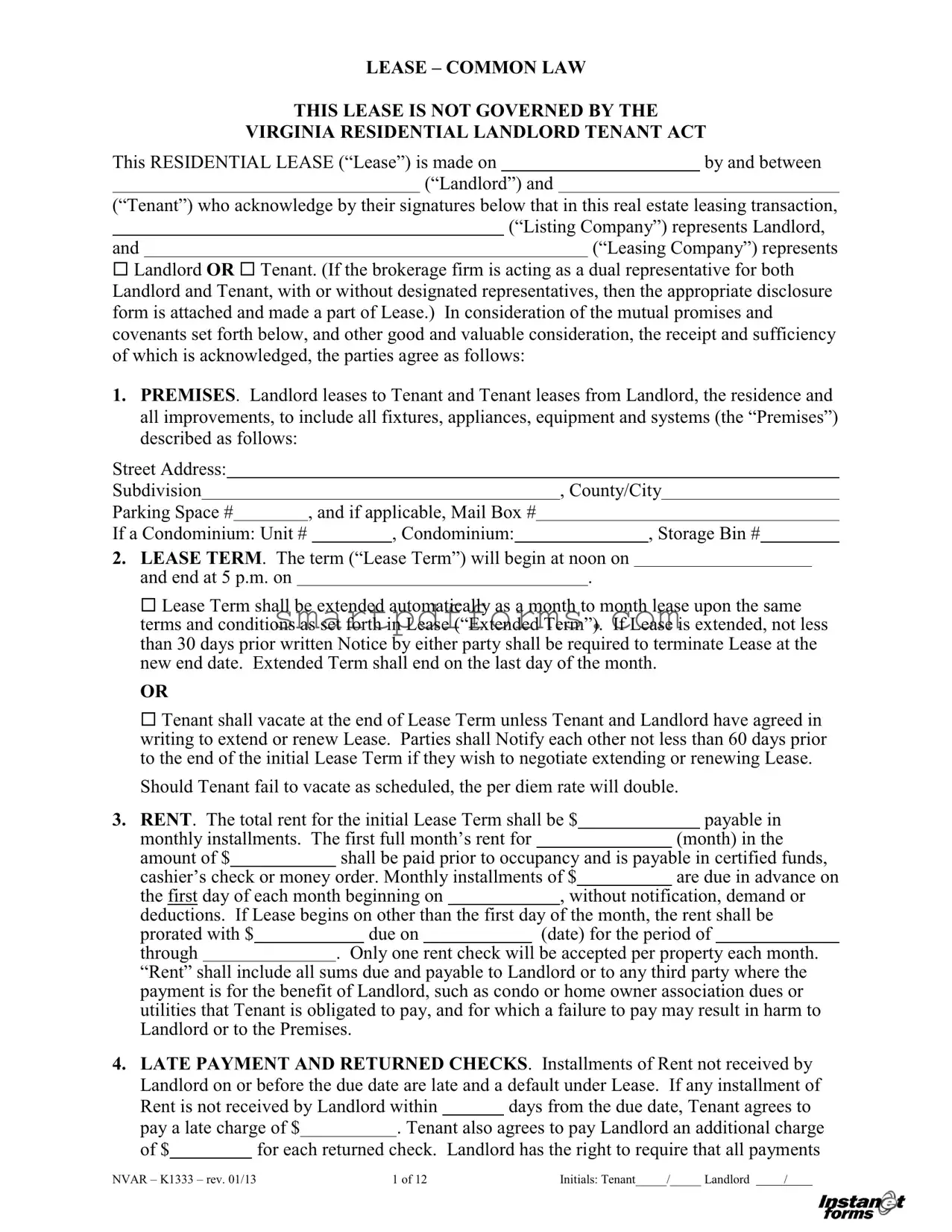H.Paying the cost of any unnecessary service call and any costs incurred as a result of Tenant failing to keep appointments with service persons that require access in order to make scheduled repairs. Any request for repair is understood to mean that Tenant has given permission to enter the Premises to make the repair.
I.Making any repairs, alterations, or additions required by any governmental authority, Association, insurance company or the Managing Agent due to Tenant’s use.
J.Controlling and eliminating household pests including but not limited to fleas, ticks, bed bugs, roaches, silverfish, ants, crickets, and rodents during occupancy. Upon vacating the Premises, Tenant shall be responsible for the costs of the elimination of all such pests and vermin.
K.Providing notification to Landlord if Tenant intends to be absent from the Premises for more than 14 days. If Tenant fails to Notify Landlord, Landlord may consider the Premises abandoned.
L.Not placing or displaying any sign, advertisement or notice on any part of the Premises.
M.Not creating or permitting any lien upon the Premises or Tenant’s interest in Lease. Lease shall not be recorded by Tenant.
N.Providing a copy of the court order to Landlord if a Tenant is granted possession of the Premises by a court of competent jurisdiction to the exclusion of any other Tenant or occupant, or provide a key to any locks that are changed and/or security codes to any devices installed on the Premises.
20.LANDLORD CONSENT REQUIRED. Tenant is required to submit a written request, including any plans for restoration, to Landlord and obtain Landlord’s written consent for any of the following:
A.Remodeling, making any structural change, alteration, addition, or decoration, including without limitation, wallpapering and painting.
B.Installing, attaching, removing, or exchanging appliances or equipment, such as air conditioning, heating, refrigeration, TV antenna or satellite dish, wood burning stoves, fireplace inserts or kerosene heaters.
C.Driving nails or other devices into walls, ceilings or woodwork (other than a reasonable number of picture hanger nails, which are permitted).
D.Affixing any object containing an adhesive backing to any surface or attaching plant hooks to the ceiling.
E.Re-keying locks, installing additional locks or security systems. Tenant must provide Landlord, and Association where required, with a duplicate of all keys and instructions on how to operate all locks and/or systems.
F.Installing iron safes, water beds, aquariums over 20 gallons, or any extra-heavy objects as reasonably determined by Landlord.
21.INSURANCE REQUIREMENTS. Throughout Lease Term, Tenant shall maintain an insurance policy which provides public liability coverage, protects Tenant’s personal property and names Landlord and Managing Agent as additional insured. Tenant shall provide Landlord with a certificate of such insurance prior to occupying the Premises. Tenant will do nothing and permit nothing to be done on or about the Premises that will increase the cost of or cause the cancellation of any fire or other insurance policy covering the Premises. All of Tenant’s personal property located or stored at the Premises shall be at Tenant’s sole risk. Tenant shall indemnify and hold harmless Landlord from any loss or damage to such personal property. Landlord and/or Association shall not be liable for any injury, damage, or loss resulting from any accident or occurrence in or upon the Premises.










